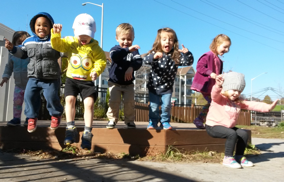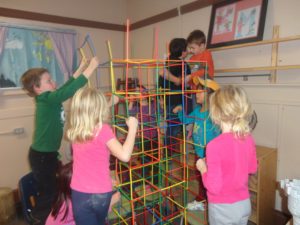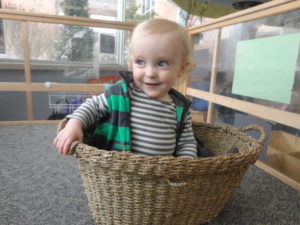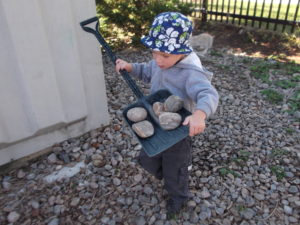Have you ever wondered why young children repeat behaviours over and over? Why they want you to read that book, again and again? Why they love the act of filling and dumping, filling and dumping? Why, just as you are putting the laundry away in their drawers, they are pulling it out? The answer is quite simple, they are building their brains. These repeated patterns of behaviour are called “schemas”. Schemas appear in all children’s play. They are natural urges that are building blocks for the brain and help to create solid connections that are necessary for learning and development.

The easiest way I know to describe what’s happening in the brain when children have these repeated experiences was shared with me from my colleague Anne Marie Coughlin. Consider the notion of taking a walk in a patch of long grass. As you walk, the grass flattens a bit. Each day as you take this same path it flattens a bit more. As you continue to take this path the grass slowly dies and a solid pathway lays beneath your feet until eventually no grass will grow again and the pathway remains. That’s how connections in the brain are developed.
When we begin to see that these repeated behaviours in children’s play are critical to brain development we look differently at their play. What might seem like a frustrating, or at times annoying behaviour, now looks like brain work and becomes play behaviour we want to support and develop.
Once you understand schemas it is impossible not to see them everywhere in children’s play. Here are a few easily recognized schemas and perhaps some things your child might love to do.
Trajectory
Probably the schema that can be the most challenging and even frustrating as children can’t resist the urge to throw things, inside and out. This schema also includes actions like climbing up and jumping off of things, throwing and dropping. I’m sure we can all remember the moment when the dishes go flying off the highchair or the continuous game of dropping and picking up the spoon.
Connecting and Disconnecting
The urge to connect and disconnect materials is often seen when children are playing with train sets, buckets, Lego, magnets, stickers, marker caps, lids, clothes pegs, etc.
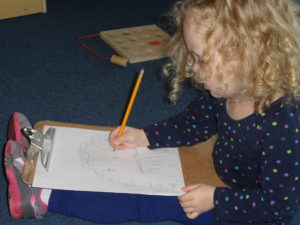
Rotation and Circulation
Turning knobs, spinning in circles, watching the washing machine on the spin cycle, drawing circles, playing with wheels and launching toys that roll are all urges connected with the rotation schema.
Enclosing and Enveloping
We have all watched as children joy in the game of peekaboo, climb into cardboard boxes and into cupboards. This deep desire for enclosing and enveloping is seen when we watch children fill and dump, build fences and enclosures with blocks and wrap babies in blankets.
Positioning
Lining things up, putting toys in a row, parking toy cars, sequencing by size, colour or shape, stacking books or lining all the shoes up at the door are all behaviours connected to the positioning schema.
Transporting
Young children love to carry things, push things, fill buckets, purses and strollers. All of these actions are considered the transporting schema.
Transformation
Do you remember mixing mud and water and making the most delicious mud pies? Or making cookies with your gramma? As children learn about raw materials they like to experiment, try out new ideas. They are, after all, young scientists.
When we can see these patterns of behaviour as important natural urges that build connections in the brain, we can begin to not only understand children’s play but also consider the kinds of materials we offer to children to support learning and development. Materials that offer lots of possibilities, that don’t have a right or wrong way to use them open up more experiences for children to do the work of childhood… to be researchers of the world around them.
Here is a wonderful chart by Michelle Thornhill that explores more schemas and an amazing list of materials that can support schema play.
http://mthornhill.weebly.com/uploads/6/3/4/0/63404993/loose_parts_by_schema.pdf
So the next time you see a child spinning, lining things up or spending hours at the sink filling and dumping try to picture the amazing connections happening in their brains.
Lorrie Baird
Compass ELC
For more great posts like this, subscribe to our blog: https://www.compasselc.com/blog-signup/

